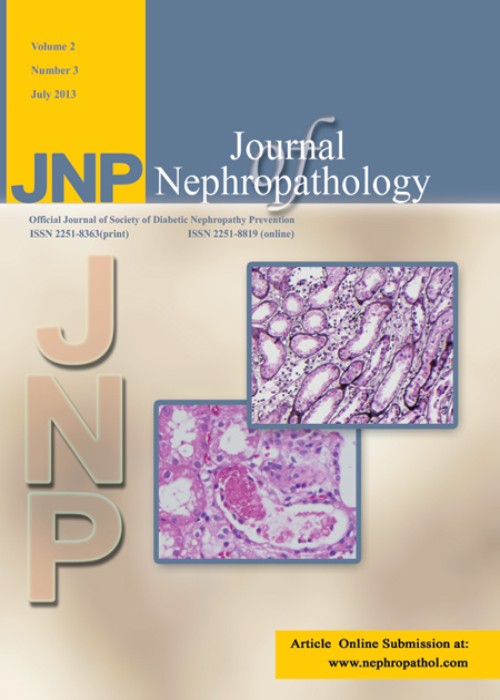Prevalence and risk factors for early chronic allograft nephropathy in a live related renal transplant program
Author(s):
Abstract:
Background
Chronic allograft nephropathy (CAN) is a common cause of delayed allograftfailure throughout the world. Its prevalence and risk factors vary depending on a number offactors. There is little information on the prevalence and risk factors for early CAN in liverelated renal transplant patients.Objectives
We aimed to determine the prevalence and the risk factors of early CAN in our setup.Patients and Methods
The study was conducted at Sindh Institute of Urology & Transplantation(SIUT), Karachi, from 2002 to 2005 on patients who had live related kidney transplantationand underwent at least one allograft biopsy within 18 months of transplantation. Thebiopsies were performed and prepared in accordance with established indications andguidelines. The Banff 97 classification and its updates were used to diagnose and categorizethe biopsy pathology. Patients were divided into two groups depending on the presence orabsence of CAN on biopsies. Following parameters were compared among the groups: age,sex, human leukocyte antigen (HLA) match, immunosuppression used, acute rejection (AR)episodes, urinary tract infections (UTIs), viral infections, cyclosporine levels, early and lategraft function monitored by serum creatinine.Results
A total of 164 patients fulfilled the study inclusion criteria. The mean age of recipientsand donors was relatively young. The majority of the donors were siblings. The overallprevalence of CAN was 25.6% (42/164), between 3 and 18 months post transplantation.The median time to the appearance of CAN was 9 months post-transplant. The prevalenceof CAN increased as post-transplant duration increased. In 39 (92.8%) subjects, CAN wasdetected on the second or subsequent graft biopsy. Only 3 (7.2%) patients showed CAN onthe first graft biopsy. The majority of cases belonged to moderate degree or grade II CAN.The mean serum creatinine values were higher in the CAN group at the time of dischargeand all times post-transplantation.Conclusions
In conclusion, the results show that serum creatinine at the time of discharge isa useful predictor of later development of chronic changes in the allograft. Further studiesare needed to identify the risk factors for the early development of chronic changes in livingrelated renal transplant program.Keywords:
Language:
English
Published:
Journal of nephropathology, Volume:3 Issue: 2, Apr 2014
Pages:
69 to 79
magiran.com/p1260898
دانلود و مطالعه متن این مقاله با یکی از روشهای زیر امکان پذیر است:
اشتراک شخصی
با عضویت و پرداخت آنلاین حق اشتراک یکساله به مبلغ 1,390,000ريال میتوانید 70 عنوان مطلب دانلود کنید!
اشتراک سازمانی
به کتابخانه دانشگاه یا محل کار خود پیشنهاد کنید تا اشتراک سازمانی این پایگاه را برای دسترسی نامحدود همه کاربران به متن مطالب تهیه نمایند!
توجه!
- حق عضویت دریافتی صرف حمایت از نشریات عضو و نگهداری، تکمیل و توسعه مگیران میشود.
- پرداخت حق اشتراک و دانلود مقالات اجازه بازنشر آن در سایر رسانههای چاپی و دیجیتال را به کاربر نمیدهد.
In order to view content subscription is required
Personal subscription
Subscribe magiran.com for 70 € euros via PayPal and download 70 articles during a year.
Organization subscription
Please contact us to subscribe your university or library for unlimited access!


